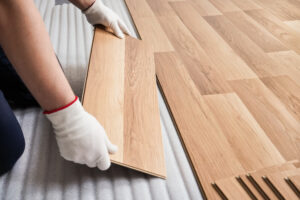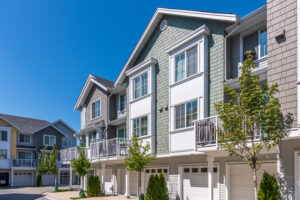- 2 min reading time
Barrier-free living: floor design for all situations in life
Barrier-free living means designing living spaces so that they can be used safely and comfortably by everyone, regardless of age, physical condition or mobility. This is not just a matter of door widths or thresholds, but also details such as the choice of flooring.
In this article, we show you what is important when designing floors in barrier-free living environments – and how function, safety and design can be combined effectively.
What does barrier-free living mean?
Accessibility describes structural measures that make living spaces accessible. without outside help for people with walking frames, wheelchairs, impaired vision, but also for children, elderly people or residents with temporary injuries. The aim is to Avoiding barriers to mobility, reduce tripping hazards and ensure that the floor is as slip-resistant as possible. selbstbestimmtes Leben in jeder Lebensphase zu ermöglichen.
Flooring plays a central role here, as it is used throughout the entire living space – from the bathroom to the bedroom, from the kitchen to the balcony.
Requirements for accessible flooring
Ein barrierefreier Boden sollte bestimmte Kriterien erfüllen – unabhängig vom Material:
- Slip resistance:
Especially in entrance areas, kitchens or bathrooms, the floor must be safe to walk on even when wet. Slip-resistant surfaces (at least R9-R10) are recommended. - Flatness and freedom from transitions:
Steps, door thresholds or high transition profiles can be obstacles for people with wheelchairs, walkers or walking aids. The ideal solution is a floor that Seamlessly laid throughout can be. - Low installation height:
Floors with a low installation height facilitate installation – even in existing buildings – and prevent height differences between rooms. - Durability & ease of care:
A barrier-free floor must be able to withstand everyday use – whether with wheelchairs, crutches or intensive cleaning. Robust surfaces that are easy to clean make everyday life easier. - Visual orientation:
High-contrast transitions, matt surfaces and textured designs are helpful for people with impaired vision. Glare from shiny floors can also be avoided.
Suitable floor types for barrier-free living
Not all floor types are equally suitable for barrier-free rooms. Here is an overview of suitable floor coverings:
- Design coverings (e.g. vinyl or mineral-based variants): Often particularly flat, robust and easy to clean. The slip-resistant properties vary depending on the model.
- Linoleum or rubber: Sustainable and hygienic, but sensitive to moisture and localised stress.
- Tiles: Very easy to clean and durable, but hard and often slippery – the right surface is important here.
- Parquet or laminate flooring: Visually appealing, but partly sensitive to moisture or point loads (e.g. wheelchair wheels).
It is not only the material that is decisive, but also the type of installation, the surface structure and the transition design.
CERAMIN® as an example of barrier-friendly floor design
One floor covering that meets many of these requirements is CERAMINThe mineral design flooring has a very low installation height, is dimensionally stable, slip-resistant and can be laid without thresholds up to 12 m in multiple rooms – even over existing floors. Thanks to its slip-resistant surface and ease of care, it is also suitable for more sensitive living areas such as bathrooms or kitchens.
In addition, CERAMIN is free of PVC and plasticisers, which is particularly advantageous in residential units for children, elderly or sensitive people. The combination of function, healthy living and design makes it a possible solution in a barrier-free context.
Conclusion: Floor design as the key to accessibility
Barrier-free living begins with thoughtful planning – and flooring plays a crucial role in this. Slip resistance, evenness, durability and low installation heights are key criteria for designing living spaces that are safe and comfortable for all situations in life.
By choosing suitable materials when renovating, you can implement accessibility with just a few small measures – not only for today, but also with a view to the future.
You can find more articles on accessible, healthy and sustainable living in the CERAMIN magazine.




